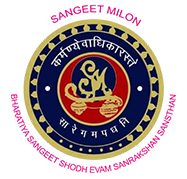Kathak (Hindi: कथक,) is one of the eight forms of Indian classical dances, originated from Uttar Pradesh, India. There are three major schools or gharanas of Kathak from which performers today generally draw their lineage: the gharanas of Benaras (born in the courts of the Kachwaha Rajput kings, theNawab of Oudh, and Varanasi respectively), Jaipur andLucknow ; there is also a less prominent (and later) Raigarh gharana which amalgamated technique from all three preceding gharanas but became famous for its own distinctive compositions.
This dance form traces its origins to the nomadic bards of ancient Northern India, known as Kathaks, or storytellers. These bards, performing in village squares and temple courtyards, mostly specialized in recounting mythological and moral tales from the scriptures, and embellished their recitals with hand gestures and facial expressions. It was quintessential theatre, using instrumental and vocal music along with stylized gestures, to enliven the stories. Its form today contains traces of temple and ritual dances, and the influence of the bhakti movement. From the 16th century onwards it absorbed certain features of Persian dance and Central Asian dance which were imported by the royal courts of the Mughal era.
The name Kathak is derived from the Sanskrit word katha meaning story, and katthaka in Sanskrit means he who tells a story, or to do with stories. The name of the form is properly कत्थक katthak, with the geminated dental to show a derived form, but this has since simplified to modern-day कथक kathak. kathaa kahe so kathak is a saying many teachers pass on to their pupils, which is generally translated, ‘s/he who tells a story, is a kathak’, but which can also be translated, ‘that which tells a story, that is ‘Kathak.
Lucknow gharānā, also known as “Purab gharâna”, is one of the six main gharanas or styles in table. It is characterized by the presence of full resonant sounds, and the use of ring and pinky fingers on the dayan (right hand drum).
Lucknow gharānā branched out of Delhi gharānā when the two brothers Modu and Bakshu Khan moved to Lucknow. There, the Nawabs (Muslim princes) would mainly patronize Kathak, a classical dance form of the North accompanied with the pakhavaj, the still living ancestor of tabla. Modu and Bakshu Khan collaborated with the performers of these arts and ended up in creating a unique style of tabla playing adapted from Kathak and pakhavaj compositions. Among these upgrades, “Gat” and “Paran” are two types of compositions that are very common in Lucknow gharānā. Lucknow style has also conceived its very own item, known as “Raon”: it consists of extremely fast, delicate and colorful fillings inside basic rhythmic patterns called Chalan”.
Some of the prominent names in this gharānā include Abid Hussain Khan, his nephew Wajid Hussain Khan, Afaq Hussain (son of Wajid Hussein Khan), Hiru Ganguly, Santosh Kishan Biswas, Swapan Chaudhuri, Swaraj Bhattacharya and Anindo Chatterjee.
Genre
The ‘Syahi’ of the right drum is used frequently and dhet dhet dhage teta, kda dha Tet, kdan etc. are used. The Qayadas are lengthy and complex. Players often recite compositions before playing them. Solo tabla playing was developed to a great extent. It is characterized by ‘open’ sounds. The sharp sound of the Chati is avoided on the right hand drum. Sometimes all four fingers are used and fingering pattern is altered too. It is linked to dance forms and has compositions, like Gat, Paran, Tukda, Chakradhar etc. The stress is on Ad and Barabar laya
Lucknow gharana has given birth to two other gharanas: Banaras and Farukhabad.
Inputs By:
Dr. Manisha Saxena
Department of Vocal Music,
SDNG P.G. College, (Ram Manohar Lohia University, Faizabad)
Gonda


